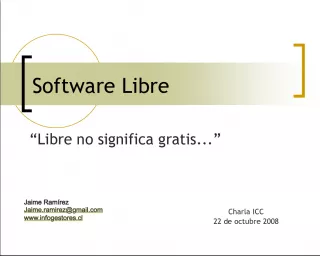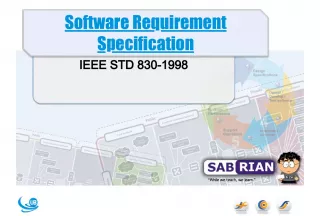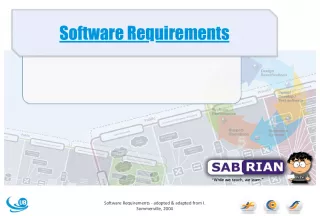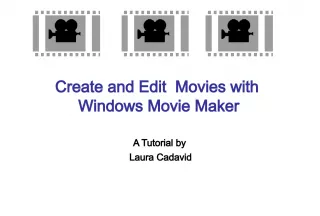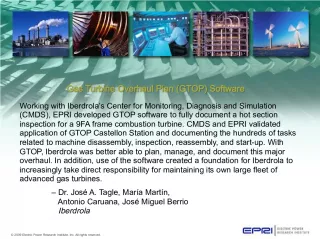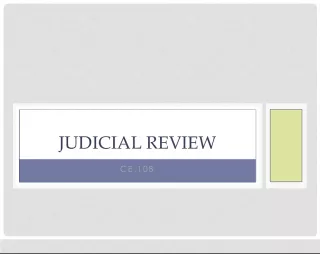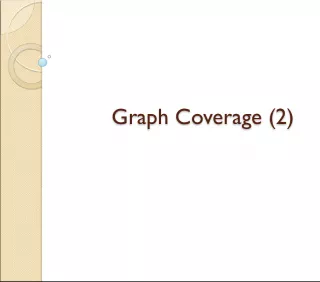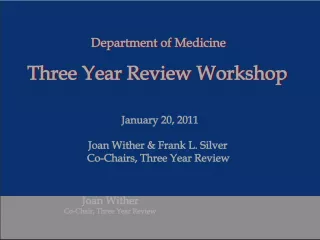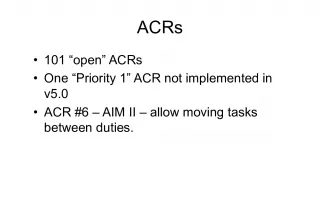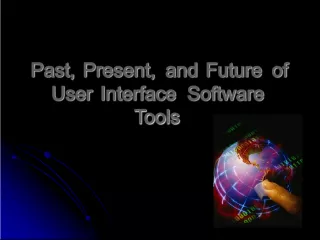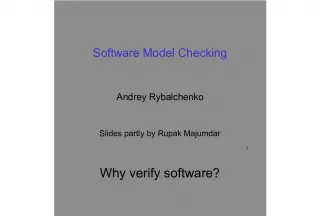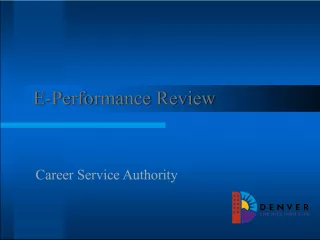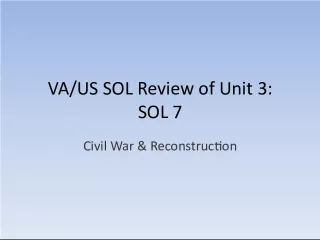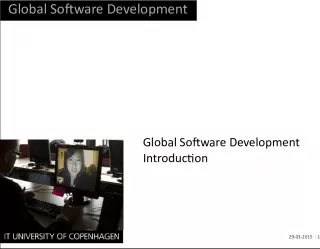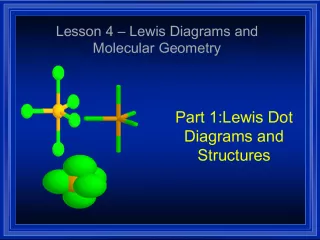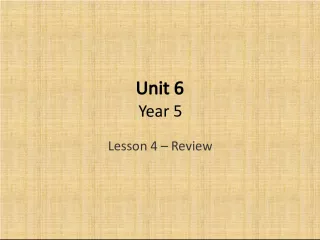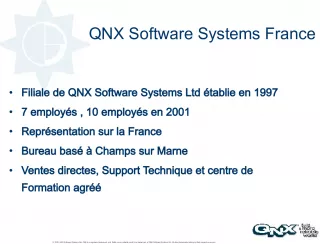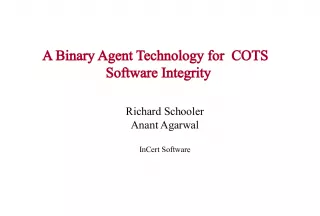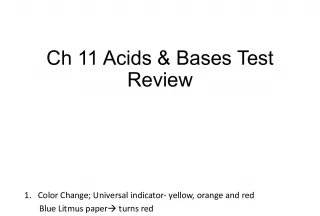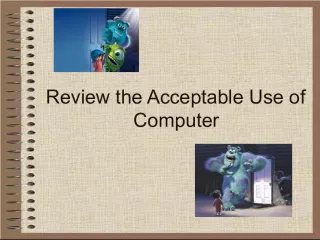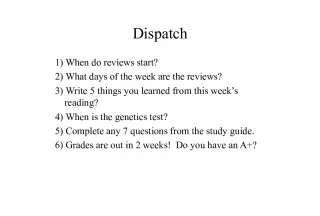ASPCAP Q2 Software Packages Review
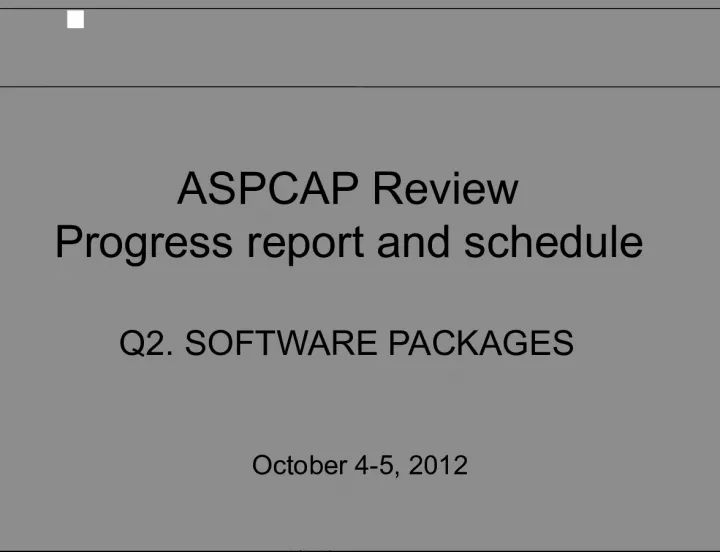

This progress report reviews the ASPCAP Q2 software packages for pre-processing and classifying Apogee stellar spectra, estimating stellar parameters and chemical abundances, and organizing results. The report also discusses FERRE, one of the three main components of ASPCAP, which fits input data to a grid of models to determine model parameters.
- Uploaded on | 3 Views
-
 carline
carline
About ASPCAP Q2 Software Packages Review
PowerPoint presentation about 'ASPCAP Q2 Software Packages Review'. This presentation describes the topic on This progress report reviews the ASPCAP Q2 software packages for pre-processing and classifying Apogee stellar spectra, estimating stellar parameters and chemical abundances, and organizing results. The report also discusses FERRE, one of the three main components of ASPCAP, which fits input data to a grid of models to determine model parameters.. The key topics included in this slideshow are ASPCAP, Q2, software packages, FERRE, Apogee stellar spectra,. Download this presentation absolutely free.
Presentation Transcript
1. ASPCAP Review Progress report and schedule Q2. SOFTWARE PACKAGES October 4-5, 2012 4/14/2015
2. Q2. SOFTWARE PACKAGES 4/14/2015 ASPCAP PRE-PROCESS AND CLASSIFY APOGEE STELLAR SPECTRA FOR STELLAR PARAMETERS DETERMINATIONS ESTIMATE STELLAR PARAMETERS ESTIMATE THE STELLAR CHEMICAL ABUNDANCES ORGANISE RESULTS PRE-PROCESS DATA FOR STELLAR ABUNDANCE DETERMINATIONS ORGANISE RESULTS in develop.
3. Q2. SOFTWARE PACKAGES 4/14/2015 FERRE and the IDL wrapper Two of the three main ASPCAPs component. The third component is a multidimensional library of synthetic spectra. FERRE is a Fortran code that fits a set of input data (e.g., spectra) to a grid of models (e.g, synthetic spectra) through a chi-2 minimization and returns the model parameters. The code performs NRUN searches starting from random starting points (developed at IAC) and has several algorithms to find the minima.
4. Q2. SOFTWARE PACKAGES 4/14/2015 The code performs NRUN searches starting from random starting points (developed at IAC) and has several algorithms to find the minima. There are two tagged versions (v3.5.8 and v3.7.0). The last version has the possibility of evaluate the chi2 value either in the compressed or in the full flux space when using PCA compression.
5. Q2. S OFTWARE PACKAGES 4/14/2015 The IDL WRAPPER does pre- and post-processing, and produce FERRE jobs - Pre-processing: read data, resample (if necessary), normalize and remove bad points (several versions exists). - Create and submit FERRE jobs in a serial or queue mode (using PBS). - Post-processing: create plots and bundle ASPCAP results into FITS tables with parameters, spectra, best-fits etc.
6. The code has three branches: Carlos (qaspcap), Jons and Anas version. - qaspcap, only pre-processing and stellar parameter determination for experimental purposes (developed at IAC). - Jons, stellar parameter (developed at NMSU). - Anas, stellar parameters (developed at UVa). Anas covers many cases (different resampling options, different errors) and has been developed to have more functionality (both stellar parameter and abundances, avoid multiple pre-processing in the case of analysis of several classes), much of which is not in use at the moment. Q2. S OFTWARE PACKAGES 4/14/2015
7. Q2. S OFTWARE PACKAGES 4/14/2015 Jons pre-processing and pipeline structure has been simplified and optimized to work with stellar parameter in the actual setup. Multiple versions are very helpful for detailed comparisons of effects of minor differences in pre-processing, will converge shortly to a scheme: - continuum normalization (with/without masking) matters - handling of errors matters Jons and Anas are svn controlled and Anas has been tagged. Carlos exists as tar ball in the wiki. https://trac.sdss3.org/browser/repo/apogee/aspcap/idlwrap https://trac.sdss3.org/attachment/wiki/APOGEE/ASPCAP/Tools/
8. Q2. Software packages 4/14/2015 Documentation: - A README file to install the code. - Manual describing the code (needs update). - Data model for apVisit files (needs update), missing for apStar. Pipeline status: - Easy to install with sdss3install (tested at NMSU, IAC had some issues installing ExtUPS). - Handles pipeline version. - Completely functional for stellar parameters and apVisit and recently with apStar files.
9. Analysis : original thought was to use combined files (apStar), which have higher S/N, however analysis started with individual visits (apVisit files), since they were available earlier. Control sample defined using a set of standard and Kepler stars, and globular clusters covering a range of metallicity (see q3). Analysis status: - First year of observations has been analyzed for apVisit data, ~ 684 observations sets (plate+MJD). Q2. Software packages 4/14/2015
10. Q2. Software packages 4/14/2015 - v0.3 processed at UVa (old linelist, 7 parameters, pre- and post-shutdown) (not strictly tagged, but can be tracked back) (http://www.astro.virginia.edu/apogee/data/apogee/aspcap/aspcap_v0.3/pl ates/results ) Problem: evaluate chi2 in PCA space (demonstrated to be less effective) - v0.4 processed at IAC (a more recent linelist, 6 parameters with vmicro fixed at 2 km/s , post-shutdown, not strictly tagged) Best results (http ://astronomy.nmsu.edu/holtz/apogee/data/aspcap/current/plates/resul ts / )
11. Q2. Software packages 4/14/2015 - Test suite of data processed at IAC and NMSU with apStar (also at UVa) and apVisit files: M5, M13, M67 covering a range of metallicities, and Kepler stars (only at IAC and NMSU). Performance at UVa : 4 nodes, 4x16 processors (2x99 Gb, 2x49.4 Gb), INSERT SPEED, 60 IDL licenses - for 6 parameters and 270 spectra (a typical plate) with 2 processor takes ~ 4.5 hrs. - same but for 7 parameters takes ~ 2 days. One year survey 684 plates ~ 5 days 3x less for all the apStar files
12. Q2. Software packages 4/14/2015 Improvements - Update documentation, including data model. - Modify coarse characterization routines. - Complete the routines for a clever threading. - Test that works with multiple classes. - Update abundance modules and testing.
